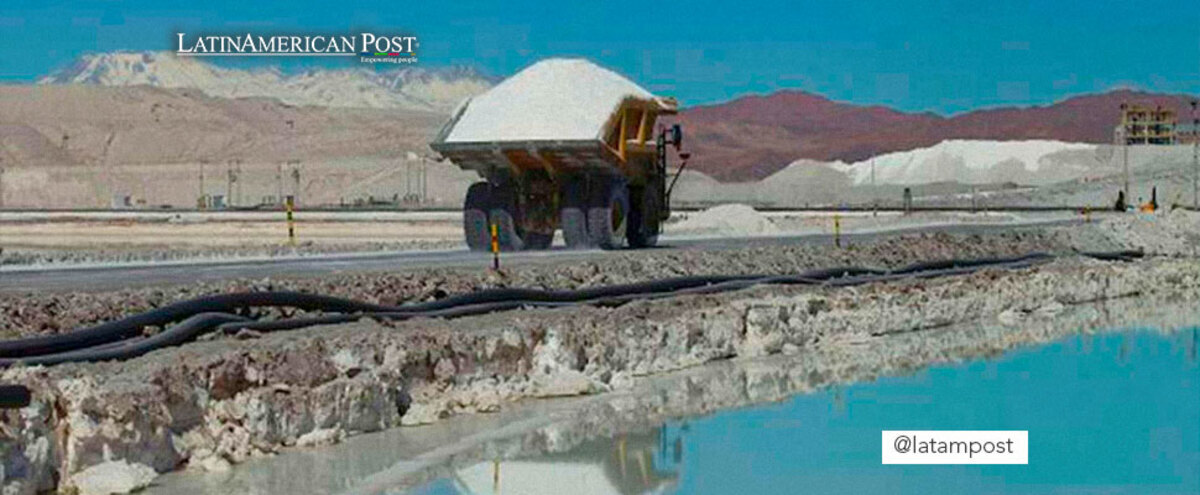Lithium Takes its Place in the World as a Strategic Resource. Is it Time to Nationalize it?
Lithium is a strategic resource. Its recent nationalization in Mexico and the enormous reserves of South America position Latin America as a primary source for the digital revolution.

Photo: Unav.edu
LatinAmerican Post | Santiago Gómez Hernández
Listen to this article
Leer en español: El litio toma su lugar en el mundo como recurso estratégico. ¿Es momento de nacionalizarlo?
The Mexican president, Andrés Manuel López Obrador, signed the decree by which lithium is nationalized, thus reserving exclusively to the Mexican State the competence for its exploitation. Mexico and some South American countries lead the world's lithium reserves, a crucial element for various industries, mainly the batteries we use daily in numerous essential devices.
Mexican Lithium
Despite being pointed out as someone who is not in favor of the environment and renewable energies, López Obrador showed considerable interest in lithium from the beginning of his administration. In the most recent Mining Law, the importance of lithium was established, but it was until now that the decree shielded the exclusivity of the State to exploit the metal. This precious metal is manipulated mainly in the northern states, where Sonora stands out as one with the largest reserves.
In Mexico, foreign investment in strategic issues has historically been taboo. In 1938, the oil industry was nationalized, creating PEMEX, which was once the largest company in Latin America. This allowed the country's growth for decades, so just mentioning its privatization or foreign investment generates panic.
With the nationalization of lithium, López Obrador seeks to create a state company that exploits lithium and not only extracts it but can also process it to make batteries, mainly for electric cars. Although it is not the most prominent producer nor has the largest reserves in Latin America, Mexico will seek to take advantage of its proximity to the United States, the largest market for lithium batteries. Even the installation of a Tesla plant is in negotiations with the Mexican government.
According to the 2021 report of the United States Geological Survey on metals, Mexico has a reserve of 1.7 million tons, far from Bolivia's 21 million, Argentina's 19.3 million, or Chile's 9.6 million, but with which the country America seeks to compete with South America.
You can also read: Is it true that Biden's immigration policy has had a good effect?
Lithium, the "White Gold" of the 21st Century
Of the estimated 86 million tons of lithium reserves in the world, 58% are found in three Latin American countries: Bolivia, Argentina, and Chile, which form the "Lithium Triangle." It is an area whose industrial potential is just beginning, less than 20 years of extensive exploitation, which will grow to feed the technology produced rapidly in the world.
In Chile and Argentina, private initiative is essential in exploiting this mineral. On the other hand, in Bolivia, since the government of Evo Morales, its exploitation has been the exclusive competence of the State, a case similar to what is happening now in Mexico, which is just over a decade away in this competitive industry.
Lithium is not only used for batteries. It also has medical uses in industries such as metallurgy and chemicals to produce lubricants, ceramics, and glass. Similarly, its potential is still being studied in other sectors, something that will have future benefits for these three countries. However, it should be noted that lithium processing in Latin America still needs to be improved. It is exported as a raw material but has yet to be as a by-product, which could be compared to the oil industry, where the region is also a strategic location.
The decades of economic prosperity generated by oil were not fully taken advantage of by countries like Mexico, Venezuela, or Peru. Lithium is thus presented as an opportunity to follow a different path from oil and represent regional development. Argentina has already taken the first step by installing the first lithium battery production plant in Latin America.
Rare Earths
In addition to lithium, Latin America is rich in rare earth, a series of lanthanides ("rare" metals) that are important in the technology industry, for example, in producing automobiles or telephones. Brazil is one of the world's largest producers of rare earth and has one of the largest reserves along with China. Mexico, Venezuela, and Colombia also have deposits of these elements.
In Colombia, coltan production stands out, a series of "rare" metals whose importance in the technology industry is strategic. The problem is that its extraction is done illegally. It is extracted in regions controlled by armed groups and with ties to drug trafficking national and international, mainly from Mexico, to take it to the United States, Europe, and Asia. However, lithium, rare earth, or coltan have in common the environmental damage that they can cause, and in the case of coltan, also severe social problems such as those that occur in the Congo or Colombia, with illegal trafficking that creates a sophisticated network of organized crime with its respective damages.





